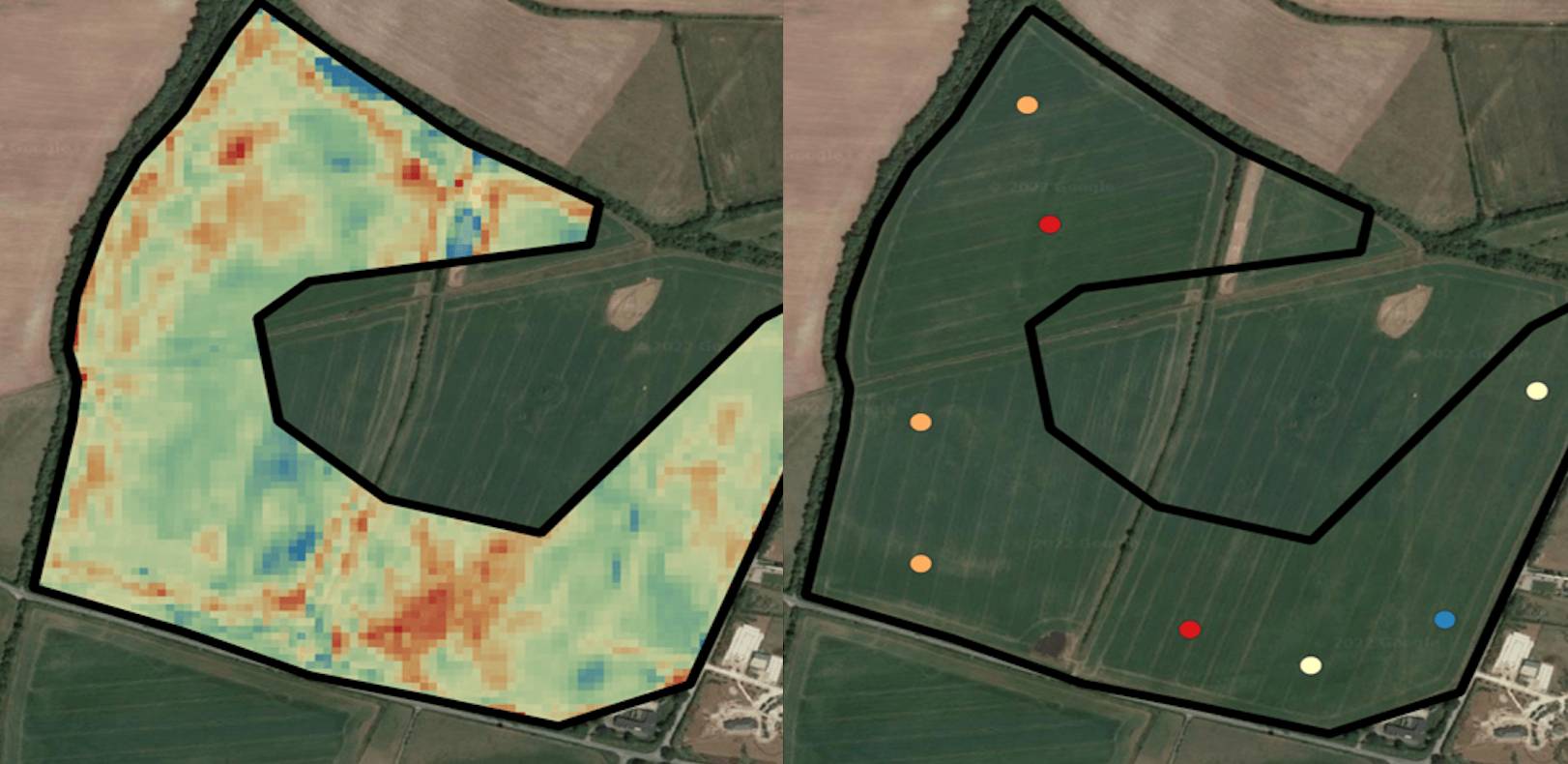
Solutions
Credible. Evidenced. Valued.
Soil health, food security and climate change are inextricably linked. Healthy soils improve agricultural performance, capture and store carbon and generate tradeable credits.

A future-proofed ecosystem.
ecometric has brought together the very best of soil science, computer science and remote sensing tools to create a new analytics ecosystem that improves on the cost and accuracy of both traditional sampling systems and assumption-based soil models. Physical soil samples anchor the system to ground truth and continually broaden the AI training and quantification accuracy over global crop and soil types.
The image above show the difference between a pure soil sample report, where there is only data at the point of sampling compared to the ecometric report where our AI relates soil sample and spectral sample information as a basis of it's calculation to provide a data point every 10 metres.
The importance of best practice: Commitment to continuous improvement
ecometric's methodology is subject to a constant improvement cycle under the governance of the Regen Registry's rigorous independent scientific review, enabling high levels of technical agility under a carefully controlled governance structure. This is why ecometric is your long-term partner.
The return on AI learning: Understanding your soil, in advance
ecometric's AI system continually learns from every cycle of soil and spectral sampling to guarantee quantification accuracy. AI accuracy is measurable against withheld soil sample results to quantify and deduct error from any SOC gains. Designing within the limits of allowable error-ranges achieves soil sampling densities that optimise accuracy and affordability for every project. This enables ecometric to deliver large-area projects cost effectively at defined and reported accuracy levels.
The value of satellite and AI: High density mapping
Physical sampling is time consuming and costly to deliver at a density that takes account of the significant in-field spatial variation. This is where the additional spectral sampling of ecometric's system at a density of 100 points per hectare adds significantly to the total sample numbers, improving quantification accuracy over a soil sampling-only system.
The danger of modelling versus measuring: Amplification of error
Activity based soil carbon models that allocate sequestration rates according to planned management practices are not accurate enough to support farm management decisions or quantify organic carbon stock change. By measuring SOC stocks annually, ecometric reports actual rather than assumed SOC change, to support both ag-system optimisation and accurate carbon accounting. This measured approach has been embraced by sophisticated carbon credit buyers passing the most demanding audit requirements over three years of sell-out, commission-free credit sales.
The accuracy of physical and virtual: Highest Quality Data
With physical sampling to calibrate and train their AI system, quantification accuracy remains tethered to ground truth. Error is carefully evaluated through the methodology and deducted in full to ensure the most conservative result, which is a key component of integrity in the voluntary carbon market and pillar of buyer trust.